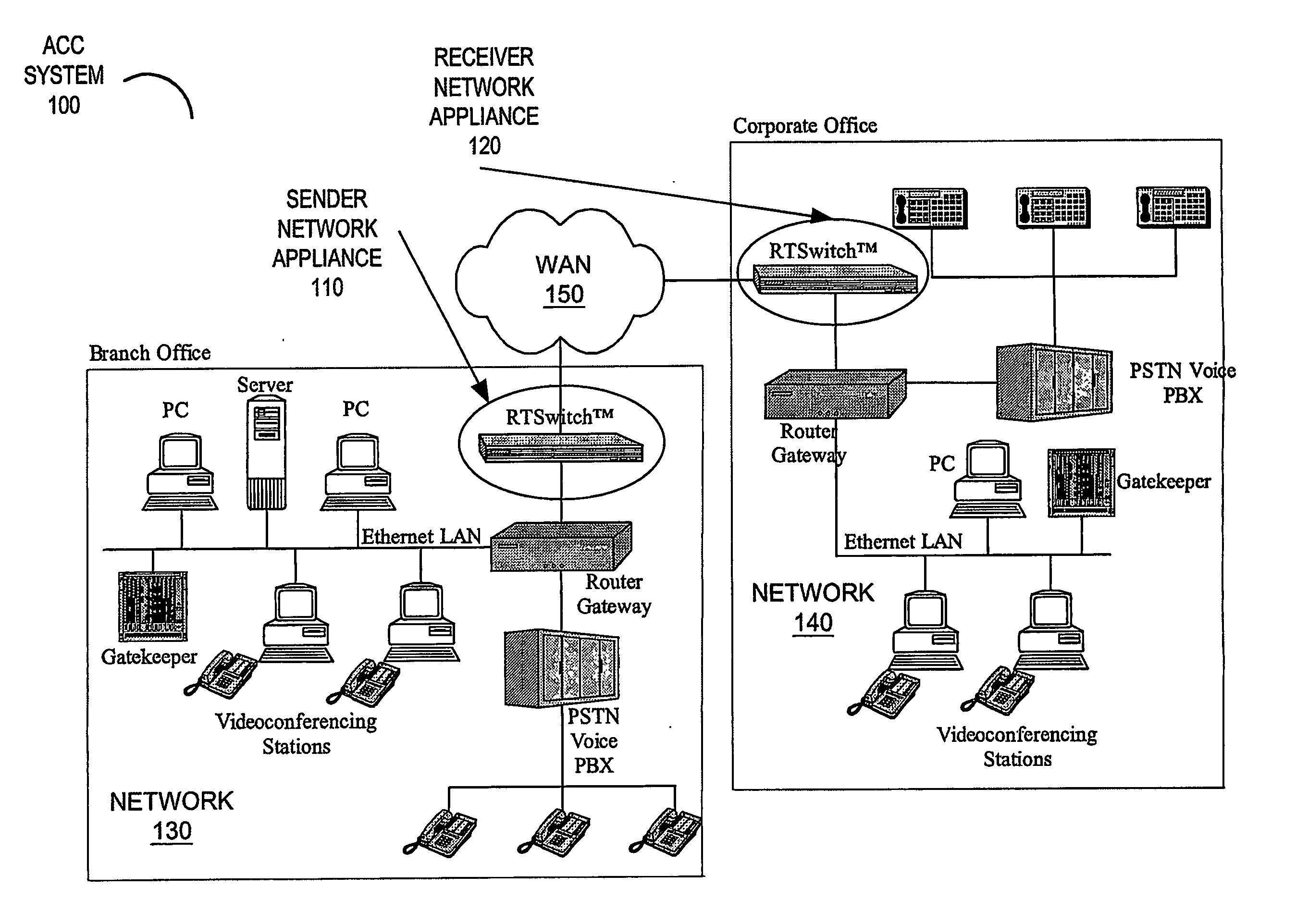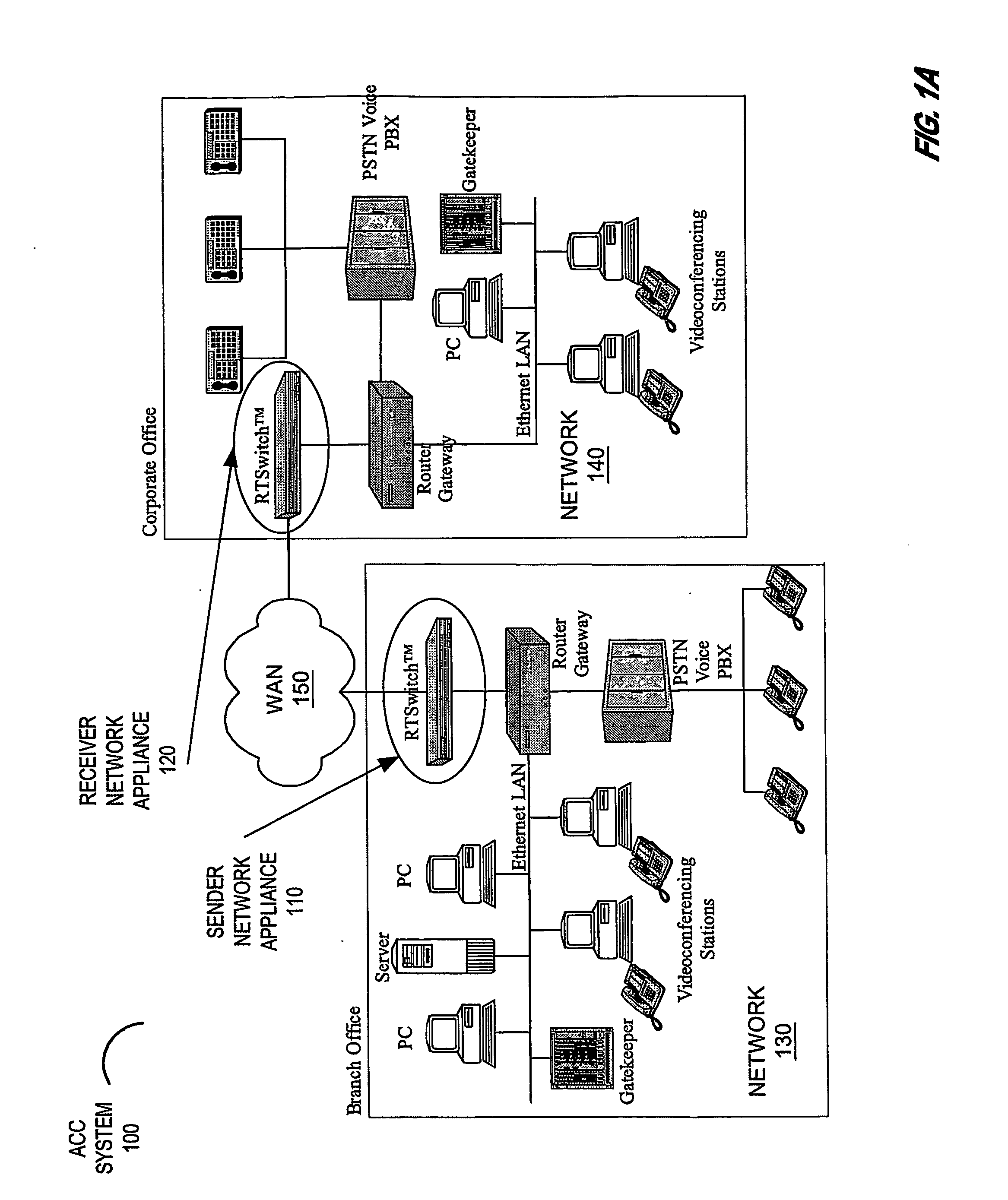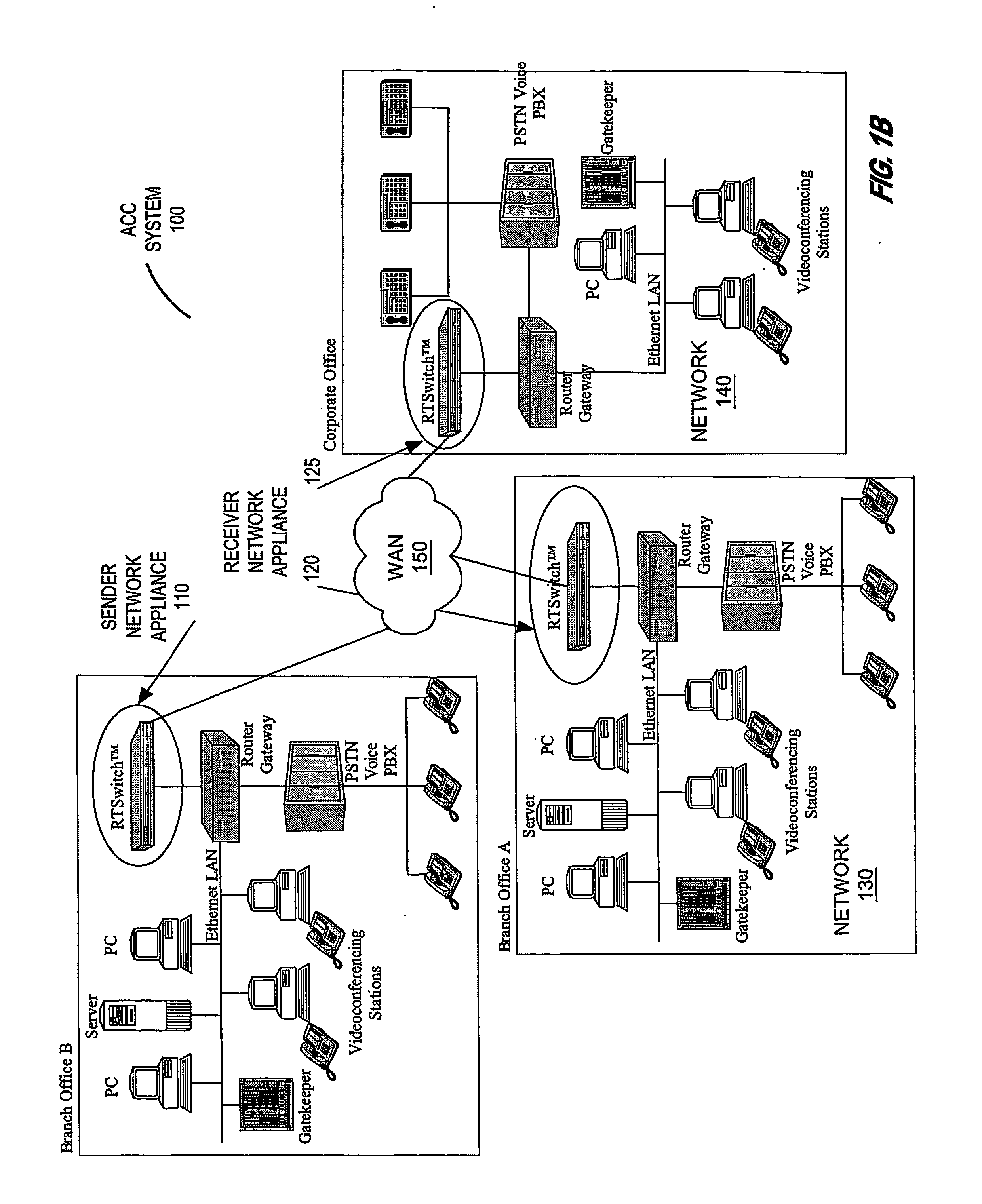System for actively controlling distributed applications
a distributed application and active control technology, applied in the field of computer and communication networks, can solve the problems of inability to provide network services, inability to use edge services, and substantial performance variations of best-effort networks, and achieve the effect of facilitating the forecasting of bit rates and metric values
- Summary
- Abstract
- Description
- Claims
- Application Information
AI Technical Summary
Benefits of technology
Problems solved by technology
Method used
Image
Examples
Embodiment Construction
In the following detailed description of the preferred embodiments, reference is made to the accompanying drawings illustrating embodiments in which the invention may be practiced. It should be understood, however, that the drawings and detailed description are not intended to limit the invention to the particular form disclosed, but on the contrary, the intention is to cover all modifications, equivalents and alternatives falling within the spirit and scope of the present invention as defined by the appended claims.
The following terminology may be useful in understanding the present invention. It is to be understood that the terminology described herein is for the purpose of description and should not be regarded as limiting.
Media Content—Typically refers to the digital content that is in the form of frames, packets or even bits, which must be processed or utilized by an application in a particular time-sequence and at a specified predetermined rate. Examples of media content ...
PUM
 Login to View More
Login to View More Abstract
Description
Claims
Application Information
 Login to View More
Login to View More - R&D
- Intellectual Property
- Life Sciences
- Materials
- Tech Scout
- Unparalleled Data Quality
- Higher Quality Content
- 60% Fewer Hallucinations
Browse by: Latest US Patents, China's latest patents, Technical Efficacy Thesaurus, Application Domain, Technology Topic, Popular Technical Reports.
© 2025 PatSnap. All rights reserved.Legal|Privacy policy|Modern Slavery Act Transparency Statement|Sitemap|About US| Contact US: help@patsnap.com



